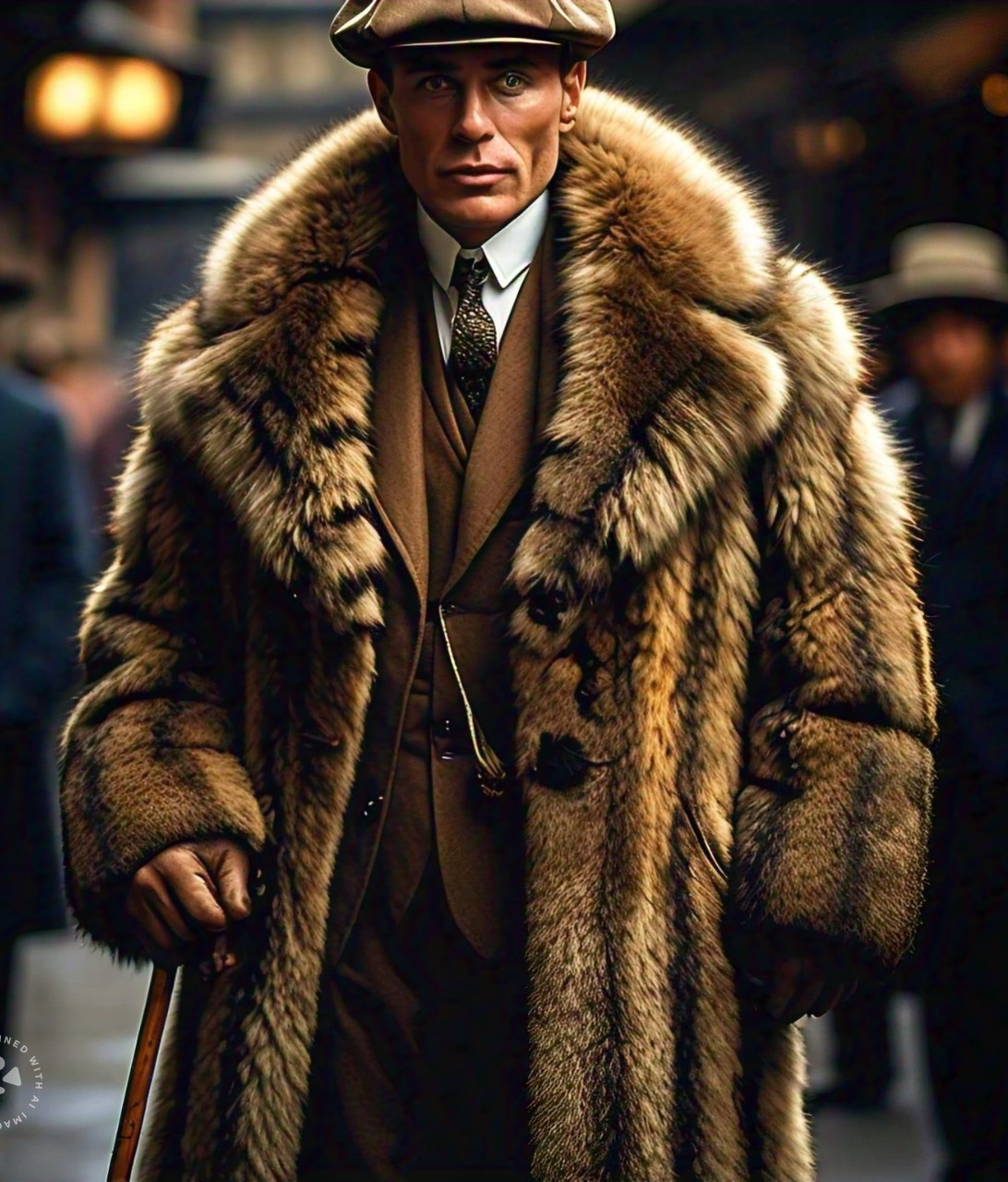Fur coats in men’s fashion, Here are some specific places where men’s fur coat fashion can be worn in each city, along with suggestions for what to wear underneath:
Fur coats in men’s fashion
Paris:
Places: Champs-Élysées, Louvre Museum, Montmartre, Galeries Lafayette, Winter Jazz Festivals
Underneath: White dress shirt, black trousers, black turtleneck sweater, dark jeans
New York City:
Places: Fifth Avenue, Central Park, Broadway shows, Ice skating rinks, Nightlife
Underneath: Black suit, white dress shirt, black tie, dark jeans, white or black sweater
Detroit:
Places: Eastern Market, RiverWalk, Motown Museum, Hockey games, Greektown
Underneath: Dark jeans, white or black sweater, black or gray hoodie, black trousers
Chicago:
Places: Magnificent Mile, Millennium Park, Navy Pier, Willis Tower, Wicker Park
Underneath: Black or navy suit, white dress shirt, black tie, dark jeans, gray or white sweater
Aspen:
Places: Ski slopes, Aspen Mountain, Downtown Aspen, Aspen Saturday Market, The Little Nell
Underneath: Thermal base layers, ski sweater, ski pants, warm fleece jacket
Milan, Italy:
Places: Via Montenapoleone, Galleria Vittorio Emanuele II, Duomo, La Scala Opera House, Brera District
Underneath: Slim-fit suit, white dress shirt, black tie, dark jeans, luxury knitwear
Moscow:
Places: Red Square, Kremlin, Bolshoi Theatre, Tretyakov Gallery, GUM Department Store
Underneath: Warm thermal layers, dark jeans, white or black sweater, black trousers, ushanka General guidelines:
Dress according to the occasion and location
Balance the luxury of the Men’s fur coat fashion with simpler, elegant underneath pieces
Consider the color and texture of the fur coat when choosing underneath pieces
Don’t forget to add warm layers for colder climates! Remember to check the dress code and weather forecast before heading out, and adjust your outfit accordingly.
Here are some places where men’s fur coat fashion can be worn during winter:
Urban Settings:
City streets: Make a statement on busy city streets, pair with a suit and boots for a stylish look.
Nightlife: Wear to upscale bars, clubs, and lounges for a luxurious vibe.
Fine dining: Dine in style at high-end restaurants, pair with a dress shirt and trousers.
Winter Sports:
Ski resorts: Stay warm and stylish on the slopes, pair with ski gear and goggles.
Ice skating rinks: Enjoy the ice in comfort and style.
Snowboarding: Wear as a statement piece, pair with snowboarding gear and boots.
Rural Settings:
Winter festivals: Attend winter festivals, such as Christmas markets or winter carnivals, in style.
Countryside walks: Take a stroll through the snowy countryside, pair with warm boots and gloves.
Hunting trips: Wear as a practical and stylish choice for hunting excursions.
Special Occasions:
Weddings: Wear as a luxurious and stylish option for winter weddings.
Formal events: Attend black-tie events, such as galas or award shows, in a fur coat.
New Year’s Eve: Ring in the new year in style, pair with a suit and champagne.
Everyday Life:
Commuting: Wear to and from work, pair with a suit and briefcase.
Running errands: Stay warm and stylish while running errands, pair with jeans and boots.
Casual gatherings: Wear to casual gatherings, such as brunch or coffee dates. Remember to consider the occasion, dress code, and personal style when wearing a fur coat.
History of Men’s Furs
The history of men wearing fur coats is rich and varied, intertwining with social status, fashion trends, and practicality throughout the centuries.
Ancient Times: Fur has been utilized by humans since prehistoric times. Early men wore animal skins for warmth and protection against the elements. As societies evolved, furs began to signify wealth and power. In ancient civilizations such as Egypt, fur was often worn by nobility while commoners used simpler materials.
Middle Ages: During the Middle Ages in Europe, fur became a symbol of elite status. Kings and nobles donned lavish fur garments made from animals like ermine, sable, and fox. These luxurious items were often adorned with intricate embroidery and served as indicators of rank during this period.
Renaissance to 18th Century: The Renaissance saw an increase in trade routes that allowed for a wider variety of furs to be imported from distant lands. Men’s fashion included elaborate capes and cloaks lined or trimmed with fur. By the 17th century, full-length fur coats became fashionable among European aristocrats.
19th Century: The Industrial Revolution brought about significant changes in manufacturing processes, making furs more accessible to the middle class. This era saw a rise in men’s outerwear featuring fur linings or collars as part of stylish winter attire. Fur caps also gained popularity among various social classes.
20th Century: The early 1900s marked a peak in men’s interest in luxury furs; however, after World War II there was a noticeable shift towards practicality over opulence due to changing societal norms. Despite this shift, high-fashion designers continued incorporating furs into their collections through the latter half of the century.
Late 20th Century to Present Day: In recent decades, attitudes toward wearing real fur have shifted significantly due to ethical considerations regarding animal rights and environmental sustainability. While some luxury brands have moved away from using real pelts altogether or offered faux alternatives instead, certain segments still embrace classic styles featuring genuine furs as symbols of heritage or high fashion.
Throughout its history, the wearing of fur coats by men has mirrored broader cultural shifts—from necessity to status symbol—while evolving alongside changing values around ethics and sustainability today.